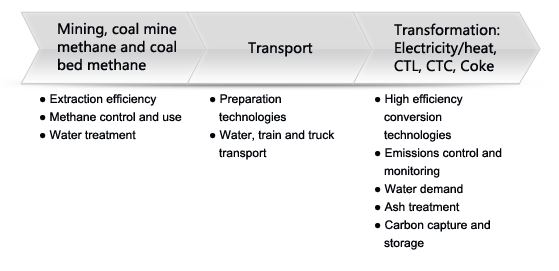China is the largest coal user in the world, using more than the United States, Europe and Japan combined and although coal has been an essential element in China¡¯s economic growth it is also responsible for around 30% of China's Greenhouse gas emissions moreover, and coal is responsible for serious environmental degradation to air and water along the value chain.
Despite measures to support alternative ways to generate power and energy efficiency measures, coal power remains the dominant source of electricity supply for the near future with, total coal consumption almost doubling between 2010 to 2030.
Coal mining and power can be found across China but the main regions are in the North, especially in Shanxi, Shaanxi and Inner Mongolia. The sector is still majority state-owned, with less than 15% in private hands and a negligible number of foreign joint ventures.
Regulation in China over the past years has focused on many aspects in the coal value chain including safety and scale increase in coal mining, encouragement of use of methane from coal mines, and a continued drive for higher efficiency power plants with low water use and strict limits on emissions.
While the average power plant efficiency in China is still below the world¡¯s average, China¡¯s new power plants do incorporate the most modern preparation, conversion technologies and NOx and SO2 filter technologies. It is estimated that by 2030 China will have added around 75 GW of supercritical, ultra-supercritical or IGCC technology.
Despite these significant advancements, and the multiple cooperation initiatives and technology imports that are undertaken already, the enormous investments of the sector and the continuous pressure to enhance efficiency and reduce emissions, result in continued opportunities for Western companies and technologies across the value chain. The figure below provides some example categories.

The Chinese government stimulates transfer of technologies and cooperation between Western and Chinese companies and provides lower import tariffs and lower value added taxes. Despite some mixed experiences in the past, most Chinese energy companies remain keen to work with Western partners to improve their operations through the application of new technologies.
Arreon has done many projects with coal power sector companies, has excellent relations with many of them and would be happy to advice Western technology companies on how and where opportunities might be, and support them to enter the largest coal market in the world. |